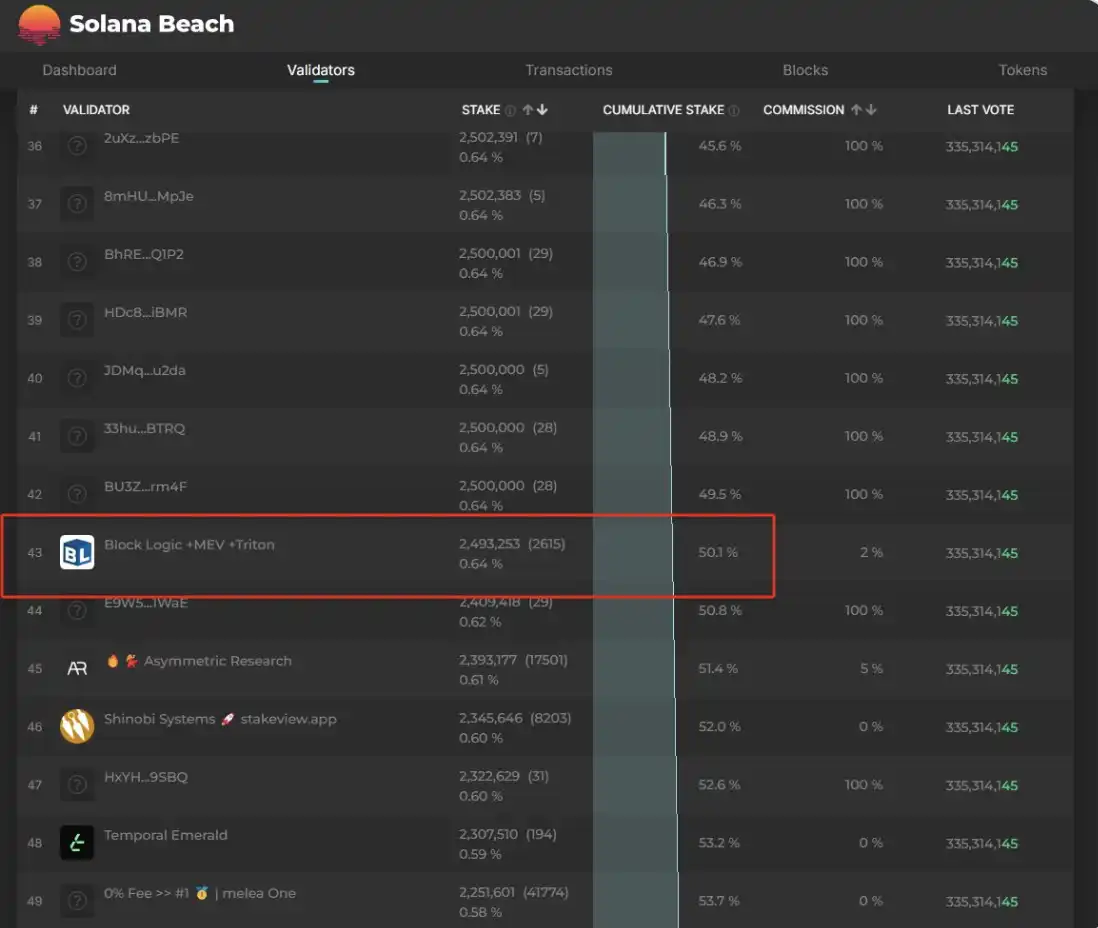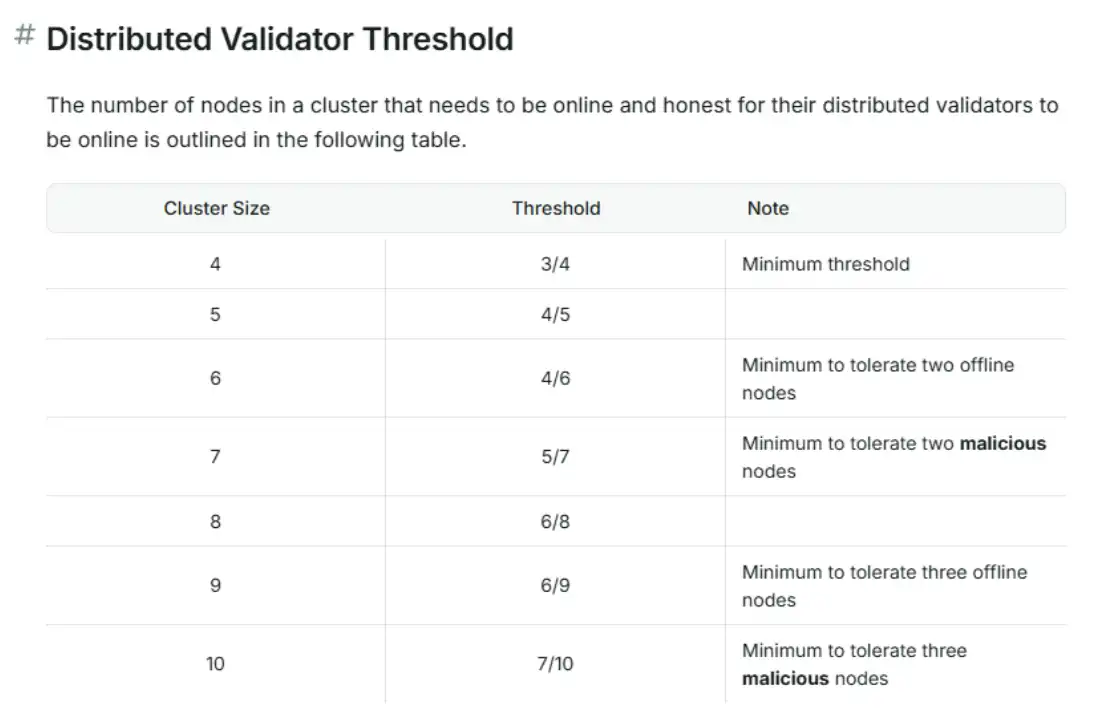ETH vs SOL Showdown: Node War and Infrastructure Moat Behind $587 Billion Staked
However, despite the funding bet having come to the same level, in terms of security, ETH still holds a slight edge.
Original Author: 0xTodd, Partner at Nothing Research
A few days ago, I saw a post saying, "Now that Solana's staking amount has exceeded ETH's staking amount, does this mean that Solana's chain security has surpassed ETH's?" This statement is too misleading, to the point that many people actually believe it.
But that's not the case. Let's look at some data:
The staking data for ETH is 34M ETH, worth around $610 billion; Sol's staking data is 388M SOL, worth around $587 billion.
SOL has indeed reached the same level as ETH, if not slightly below SOL, especially before the recent ETH rebound. (Data source: Beaconcha Solana Beach). Considering that both have a PoS mechanism attack threshold of around 33%, the theoretical attack difficulty seems to be the same.
33% can prevent block production, 51% can create a new longest chain, 67% can execute double spends. But in terms of practical difficulty, attacking ETH is significantly harder than Solana.
P.S.: Of course, assuming the success rate of attacking SOL is 0.001%, the difficulty of attacking ETH might be 0.0001%. Although the difference is significant, it is important to note that both are still highly unlikely events. The reasons for this are (1) node centralization and (2) Staking infrastructure maturity.
I. Node Centralization
Let's first consider a scenario: imagine a magical hacker who exploits a 0-day vulnerability and successfully compromises Amazon and major cloud service providers' data centers. Then, controlling Solana> 50% requires obtaining the nodes ranked in the top 43 simultaneously. It's challenging but not impossible.

On the other hand, for ETH, with each node staking a maximum of 32 ETH, one would need to acquire 1,187,000 nodes, which sounds like an insurmountable task. Of course, this calculation might seem unfair to Solana because fundamentally, ETH is also operated by numerous node operators. An entity may own tens of thousands of nodes. Yet, based on the current list of node operators on Rated... you will find that all registered ETH node operators combined represent only 47.5%, not even close to reaching the 50% threshold. It remains an impossible task.

The reason is that ETH, as an ancient public chain, has truly experienced an ancient PoS attack and has indeed made a lot of preparations to prevent this potential danger, such as encouraging retail participation in staking. Ethereum's 32 ETH threshold is not high, while Solana has high server requirements, with monthly costs being 5-10 times that of ETH, and this is just the entry level. So, if retail investors want to break even, they need to stake at least 10K SOL or more, and the yield is even lower than Jito's.
II. Infrastructure Maturity
Many ETH staking infrastructures, including @LidoFinance and @Obol_Collective, have also done a lot of homework. For example, Lido requires nodes to use fewer Amazon data centers and more niche data centers. They use fewer mainstream clients and support more niche clients. In addition, Lido specifically allocates 4% of the ETH to support Delegated Proof-of-Stake (DVT) infrastructure such as Obol and SSV. As for Obol, it is DVT technology. You can think of it as your node being collectively managed by a cluster rather than a single entity. For example, if four people manage a node, you can set it as 3/4, so that if one node goes offline, the other nodes can immediately take over. If you set it as 10, then you can set it as 7/10, tolerating a maximum of three nodes offline.

Note: On ETH and most PoS chains, node downtime is also considered a form of malicious behavior. If 33% of nodes go offline, the chain will become paralyzed. Moreover, Obol's uniqueness lies in the fact that it achieves the cluster through a client, so your private key (fragment) will not be uploaded to the chain, making it more secure. This is achieved through DKG (I can share more about DKG later when I have time). Recently, Obol just launched on the mainnet, and those interested can go check it out at @ebunker_eth.

Therefore, infrastructure designed for ETH staking like Obol currently does not exist for Solana. Of course, this is not to praise one and criticize the other; both chains are very secure. However, even though the stakes have reached the same level, in terms of security, due to node concentration and infrastructure maturity, ETH still has a slight edge.
Disclaimer: The content of this article solely reflects the author's opinion and does not represent the platform in any capacity. This article is not intended to serve as a reference for making investment decisions.
You may also like
YFI +1.21% Daily Returns from Automated Yield Agreements and DeFi Stability
- IO DeFi launches automated yield contracts to stabilize crypto returns via smart contracts, aiming to reduce manual intervention and address DeFi challenges like gas fees and slippage. - YFI rose 1.21% in 24 hours on Nov 15, 2025, but fell 6.38% in 7 days and 41.76% in a year, reflecting short-term volatility and long-term decline. - Technical analysis shows a bearish short-term trend, yet the 24-hour gain sparked optimism, highlighting market uncertainty and automated strategies’ potential to mitigate v
Bitcoin News Update: Major Whale Faces Uncertainty on $95M BTC Position Amid $327M in Crypto Liquidations Due to Market Volatility
- $327M in crypto positions liquidated, driven by longs as a whale buys 1,000 BTC ($95.3M) on Hyperliquid. - BTC volatility pushes price below $95K, exposing $5.52B in leveraged exposure with $159M in long losses. - Crypto slump sees $492M ETF outflows, 1.5% ETH drop, and 2.2% SOL decline amid AI stock concerns. - Tether invests €1B in German robotics firm Neura, expanding beyond stablecoins into AI and real-world assets. - Japan and UK introduce stablecoin regulations as macroeconomic uncertainty amplifie

Bitcoin News Today: Harvard Invests $442M in IBIT—Traditional Finance Turns to Bitcoin for Portfolio Diversification
- Harvard triples stake in BlackRock's IBIT to $442.8M, becoming top institutional holder. - Bitcoin ETFs attract $60.8B in inflows since 2024, with BlackRock's IBIT dominating the market. - Harvard's move reflects institutional shift toward crypto as inflation hedge despite volatility. - Analysts highlight Bitcoin's scarcity and regulatory clarity as key drivers for portfolio diversification. - Brown University and others may follow, signaling broader adoption of Bitcoin ETFs.
Solana News Update: Solana ETFs Attract $370 Million Despite 34% Price Drop—Institutional Optimism Defies Negative Sentiment
- Solana ETFs attracted $370M in 13 days despite 34% price drop, driven by Bitwise and Grayscale products. - Institutional inflows contrasted broader crypto outflows as technical indicators signaled bearish sentiment below $140. - NYSE launched Solana ETF options, intensifying altcoin ETF competition with VanEck's regulatory filings. - Diverging ETF demand and price weakness raised sustainability concerns amid declining retail enthusiasm.

